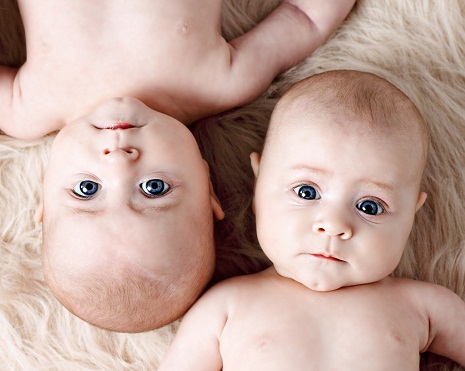A study conducted by researchers at the Princeton Baby Lab in the US recorded the brain activity of 18 children aged between 10 and 15 months as they engaged with an adult experimenter.
"Previous research has shown that adults' brains sync up when they watch movies and listen to stories, but little is known about how this 'neural synchrony' develops in the first years of life," says cognitive psychologist Elise Piazza.
This kind of interpersonal 'synchrony' isn't some mind meld caused by spooky transmissions, but rather the product of finely tuned patterns that coordinate tasks in different parts of the brain in response to stimuli.
Those stimuli typically come from other regions of the same brain, but the actions of another person can also affect how we process information and carry out a response.
Likewise, our own actions can in return influence the other person's brain, setting up feedback loops that quickly fall into sync.
Showing how this occurs in an adult brain is easy enough. The neurological functions that process and respond to sensory information in our brains chew up a lot of energy, so researchers simply measure and map subtle changes in the infrared glow of our brains as haemoglobin in the blood supply releases oxygen.
As you might imagine, children aren't always cooperative volunteers. Of the original selection of volunteered toddlers, 15 squirmed a little too much to get good readings. Three refused to wear the infrared-measuring cap at all.
In the end, the researchers analysed the prefrontal cortex, temporoparietal junction, and parietal cortex – all areas involved in processing language, making predictions, and understanding other perspectives – of 18 kids as they engaged with a single experimenter in a range of simple tasks.
Sometimes they enjoyed a reading of the bedtime story Goodnight Moon while sitting in their parent's lap. Other times it was a nursery rhyme singalong, or playing with a set of toys.
To have a point of comparison for the pair's brain activity, a number of trials involved the experimenter sitting with their side facing the child as they engaged with another adult in similar ways.
The difference revealed a similar synchronisation occurring in babies as between adults – the experimenter's and child's brain echoed each other in areas involved with higher order processing, but only when the two were interacting directly.
"While communicating, the adult and child seem to form a feedback loop," said Piazza.
"That is, the adult's brain seemed to predict when the infants would smile, the infants' brains anticipated when the adult would use more 'baby talk,' and both brains tracked joint eye contact and joint attention to toys. So, when a baby and adult play together, their brains influence each other in dynamic ways."
This was especially evident in the pre-frontal cortex, the part of the brain that deals with planning and learning. Since this is also a region that's yet to fully develop in infants, the finding was somewhat a surprise.
"We were also surprised to find that the infant brain was often 'leading' the adult brain by a few seconds, suggesting that babies do not just passively receive input but may guide adults toward the next thing they're going to focus on: which toy to pick up, which words to say," says psychologist Casey Lew-Williams.
If they knew the rules, babies would make perfect poker players. It can be hard to know what's going on inside those tiny developing brains just by watching their face.
But it's becoming clear that they're far from passively taking everything in – from the youngest age, infants are guiding those around them into showing them the ropes, causing our brains to fall into step with theirs.
"Our research, using an infant-friendly imaging technique, provides the first demonstration of the dynamic role played by both the developing and mature brain during live social interaction," the researchers write in their report.
This research was published in Psychological Science.
More about: #babies
















































